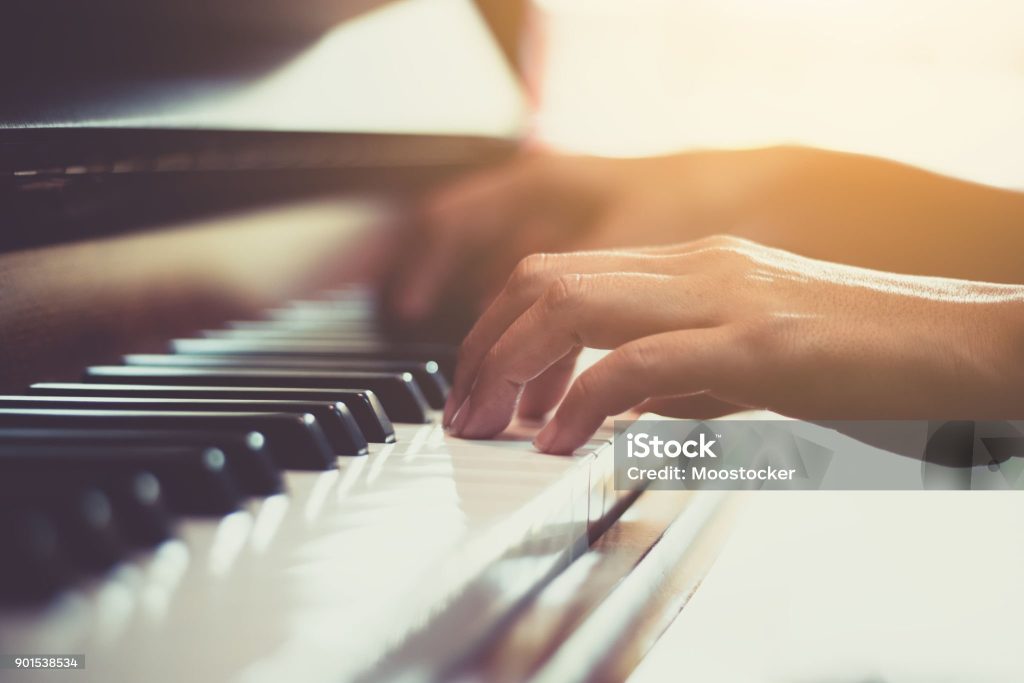Many people are interested in learning to play piano to either play a classical piece like Flight of the Bumblebee by Nikolai Rimsky-Korsakov or a trendy song by Dua Lipa.
However, due to the complex and intricate knowledge required to play piano, which is not accessible to everyone, many people discard this noble dream.
Therefore, this comprehensive guide is going to explore seven basic and quick lessons you need to learn to start playing piano today.
1. Obtain Proper Piano Posture
The adventure of learning to play the piano is exciting and offers up a world of musical possibilities. As a result of technological improvements, prospective pianists today have access to a diverse choice of online piano classes and self-learning tools.
Before you learn to play piano, achieving the proper posture required to play the instrument is essential. To achieve proper posture, you can practice a simple wall exercise to assess and correct forward neck posture, ensuring your head is aligned with your spine.
Adopting this aligned position enhances your posture and prevents potential strain on your neck and shoulders during piano play.
2. Assess the Layout of Piano
This is the simplest and most common process of learning the piano and noting the black note pattern. They’re all up and down the piano in groups of two or three. Find a pair of black notes, then the white note directly to their left, and you have the note C.
The piano notes are called alphabetically: A, B, C, D, E, F, G. The alphabet pattern resumes after G. Take notice of how the notes are always in the same position in regard to the black notes: every A is between the top two black notes in a group of three, and so on.
The first stage in learning to play piano is to play and name all the notes, gaining faster as you go. Finding all the C notes first, then all of the G notes, and so on, is a nice way to start.
3. Proper Finger Placement
It is just as crucial to know where the notes are as it is to know how to play them with your right fingers. If you don’t practice correctly, you’ll have problems playing up and down the scales.
Raise your wrist so that you can balance something on its back. Next, curve your hand slightly so that you’re practically playing on the tips of your fingers rather than flat fingertips. This makes it easier to play and move into later hand positions.
4. Learning to Play Piano Chords
Chords are made up of three or more notes performed simultaneously. Piano chords might be difficult for newcomers at first since they require playing many keys at the same time.
However, learning at least the most fundamental piano chords is one of the most important piano abilities for all beginners.
5. Upgrade to Playing Scales
Scales allow you to become acquainted with the notes and their sounds. Playing music while sight reading helps you understand where the notes are and what they look like on the staff if you’re learning how to sight read.
Play the scales for each hand separately and then combine them and play them together.
6. Understanding the Importance of Piano Pedals
Modern acoustic or digital pianos usually come with three pedals, whereas there are two pedals in older acoustic pianos. These are some tips to remember on how to properly utilize the piano pedals:
- Your feet should be flat on the floor if you are sitting appropriately.
- Arrange them so that the big toes of both feet are parallel to both left and right pedals.
- Then, raise the front of your foot and move it forward to utilize a pedal.
- Place your foot’s ball on the rounded end of the pedal, in line with your big toe.
- Pivot down smoothly, keeping your heel on the floor.
- Avoid making unnecessary noise by striking the bottom terminal too quickly or releasing the pedal uncontrollably.
Moreover, different types of pedaling are used for diverse sound effects.
- Delayed/legato pedaling consists of pressing the pedal down after playing a note, releasing it, and then pressing it down again after the following note is played.
- Half pedaling is when you slightly press the sustain pedal so dampers only softly touch the strings.
- Preliminary pedaling is when you hit the sustain pedal before playing a note. This removes the damper from the string before the hammer impacts, resulting in a deeper, fuller tone that rings out even louder.
- Simultaneous pedaling (direct/rhythmic pedaling) refers to pushing and releasing the pedal while playing a note or chord.
7. Practice with Songs
It is also essential to take pleasure when playing the piano. When practicing, aim to improve at the music you enjoy. Pop music is a simple genre to learn. The melodies in this song are basic and easy to grasp.
There are also several catchy and useful beginner piano tunes. Discover what they are and utilize them to hone your skills.
Conclusion
While learning to play piano takes physical, mental, and emotional persistence, these basic and quick lessons can open a gateway toward your musical journey.
These lessons break down the complex basics of piano while playing, and practicing with your favorite songs helps you connect with the music on a deeper level.
You may also like
-
Bollyflix: A One-Stop Destination for New Movies and Web Series
-
Audio Entertainment Informally: Exploring Casual Ways to Enjoy Sound and Music
-
Discover the Best Night Club in Bratislava: Great Club Bratislava
-
Youtube Downloader – Download Youtube videos, convert Youtube to MP3, MP4 for free
-
The Enchanting Allure of Pinoy Teleserye and the Virtual Hearth of Pinoy Tambayan

